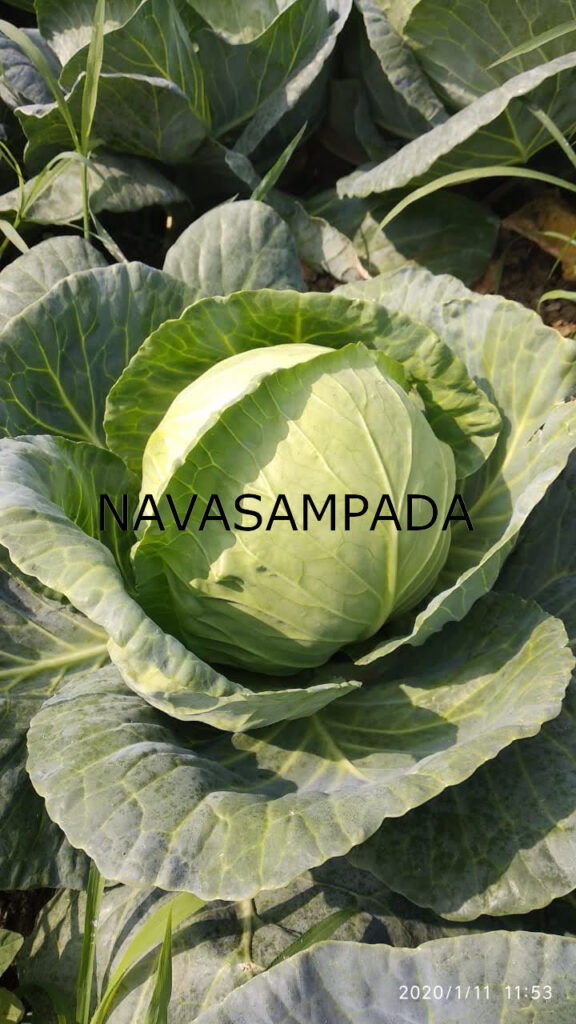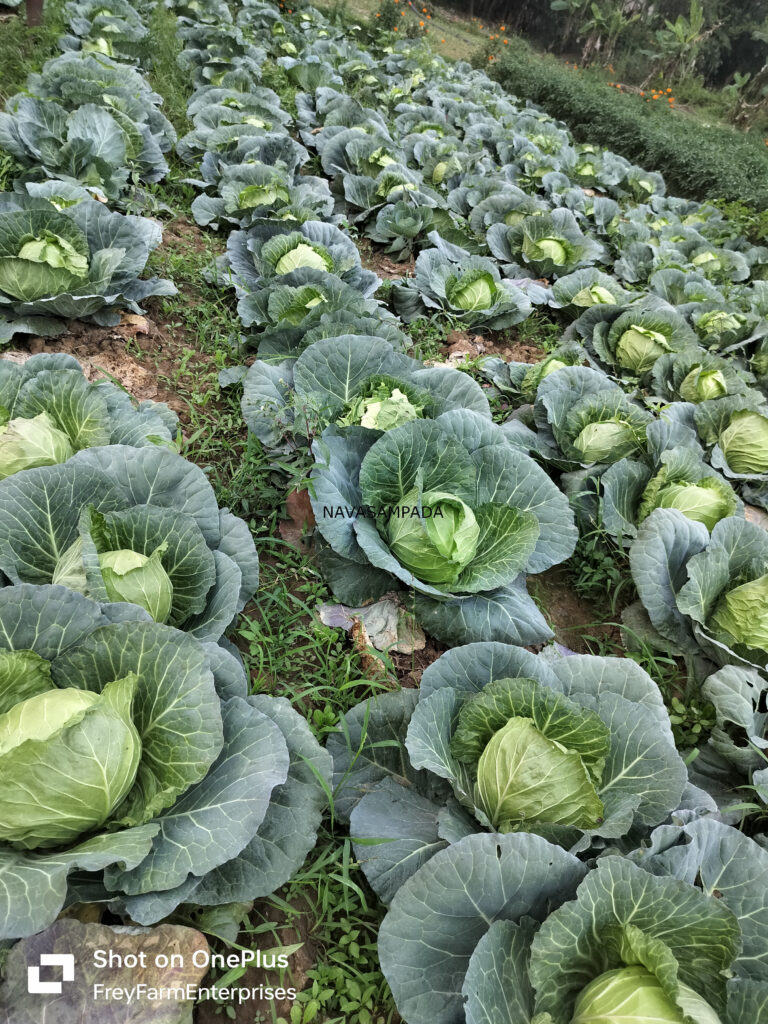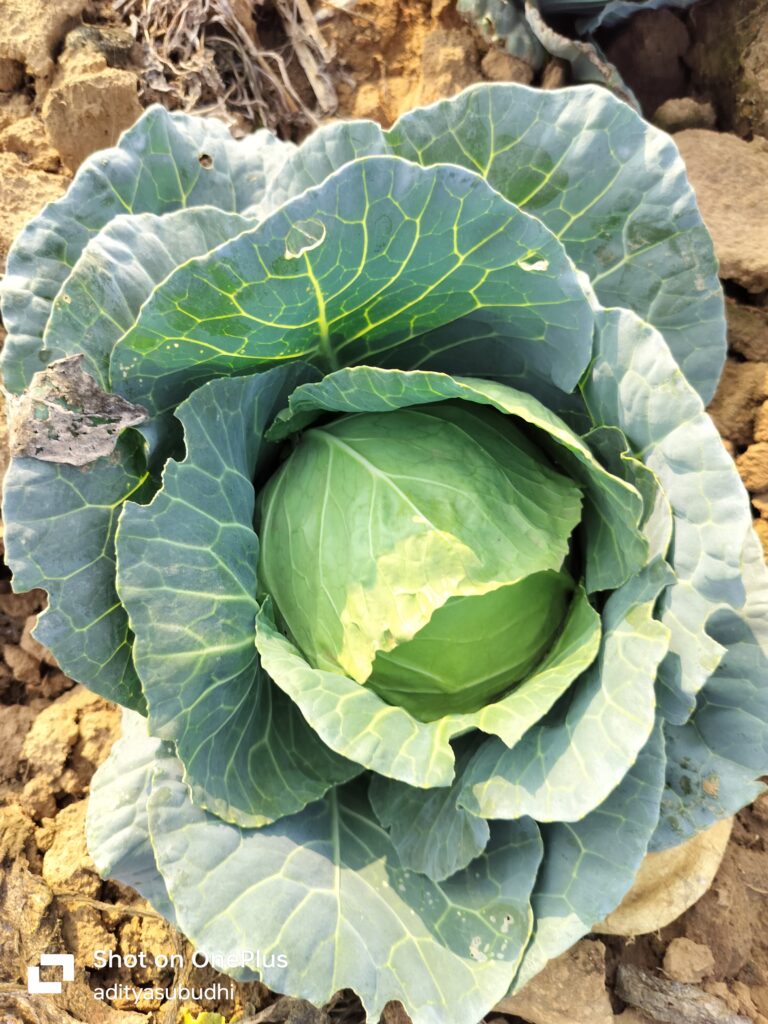Cabbage farming is a rewarding endeavor that can provide a steady income if managed properly. Growing cabbage requires attention to soil health, proper timing, and effective pest control. Here’s a step by step guide to growing cabbage:
Choosing the Right Variety
Determine the type of cabbage: There are different varieties of cabbage including green, red , and savoy cabbage. Choose a variety suited to your climate and market demand.
Consider the climate: grows best in cool weather, so it’s ideal for spring or fall planting. Some varieties are more tolerant to heat, while others thrive in cooler temperatures.



Preparing the Soil
Soil testing: Before planting, test your soil to determine its pH and nutrient levels. It prefers slightly acidic soil with a pH between 6.0 and 6.8.
Soil preparation: Ensure your soil is loose, well drained, and rich in organic matter. If your soil is clayheavy or compacted, improve its structure with organic compost or well rotted manure.
Fertilization: It requires a nutrient rich soil. Apply balanced fertilizer (like NPK 101010) before planting. A good dose of nitrogen is crucial for leafy growth, while potassium helps with disease resistance.
Seedling Preparation
Start seeds indoors: If you’re starting from seeds, sow them indoors about 68 weeks before the last expected frost date. Cabbage seeds germinate best at temperatures of 6575°F (1824°C).
Transplant seedlings: Once the seedlings have grown strong and are about 46 weeks old (with at least two sets of true leaves), they can be transplanted into the field. This is usually after the frost danger has passed and the soil has warmed.
Planting the Cabbage
Spacing: Cabbage plants need plenty of room to grow. Space seedlings about 1224 inches apart in rows that are 2436 inches apart, depending on the cabbage variety.
Planting depth: Plant the seedlings slightly deeper than they were in their pots to encourage strong root development.
Watering after planting: Water the cabbage plants thoroughly immediately after transplanting to help settle the soil around the roots and reduce transplant shock.
Watering and Irrigation
Regular watering: Cabbage needs consistent moisture, especially during dry periods. Water regularly, ensuring the soil is evenly moist but not waterlogged. Drip irrigation is ideal to avoid wetting the leaves, which can promote disease.
Avoid overwatering: While cabbage needs moisture, it’s important not to overwater, as this can lead to root rot and other fungal issues.
Mulching
Apply mulch: A layer of organic mulch (like straw, grass clippings, or compost) helps retain soil moisture, suppress weeds, and regulate soil temperature. Mulching also adds nutrients to the soil as it decomposes.
Maintain mulch: Check mulch levels regularly and replenish as needed, especially after heavy rains or winds.
Fertilizing Throughout the Growing Season
Side dressing: It is a heavy feeder, so side dressing with additional nitrogen fertilizer is often needed during the growing season. Apply around the base of the plants and work it into the soil to ensure healthy growth.
Nutrient monitoring: If your soil lacks specific nutrients, consider using liquid fertilizers or foliar sprays to address deficiencies in nitrogen, phosphorus, or potassium.
Pest and Disease Control
Monitor for pests: these crops are prone to pests like aphids, cabbage worms, cabbage loopers, and slugs. Use organic pest control methods like insecticidal soap, neem oil, or introducing beneficial insects like ladybugs and parasitic wasps.
Disease prevention: Cabbages are susceptible to diseases such as downy mildew, black rot, and clubroot. Practice crop rotation, avoid overhead irrigation, and remove infected plants promptly. Consider using resistant varieties when possible.
Weeding: Regularly remove weeds from around the plants to reduce competition for nutrients and water.
Harvesting
Timing: heads are ready to harvest when they are firm and fully formed. Depending on the variety, this usually occurs about 70 to 100 days after transplanting.
Harvesting method: Use a sharp knife to cut the head of cabbage from the base. Leave a few outer leaves attached to protect the head during storage.
Check for size: heads can range in size from small to large, depending on the variety. Ensure that the heads are solid and compact.
Postharvest Handling
Storage: It can be stored in a cool, dry place with good ventilation. For extended storage, refrigerate them. If the cabbage is being sold fresh, ensure it’s cleaned and properly packaged.
Marketing: Sell fresh crop at farmers’ markets, grocery stores, or through community supported agriculture (CSA) programs. It can also be processed into sauerkraut, which has a longer shelf life.
Crop Rotation and Soil Management
Practice crop rotation: Avoid planting in the same location for consecutive seasons to reduce the buildup of pests and diseases in the soil. Rotate with other vegetables like tomatoes, beans, or lettuce.
Improve soil after harvest: After harvest, consider planting cover crops like clover or rye to improve soil fertility and structure before the next planting season.
Conclusion
Cabbage farming requires attention to detail and consistent care, but it can be a highly productive crop with proper management. By choosing the right variety, preparing the soil adequately, and monitoring the plants for pests and diseases, you can grow healthy, marketable cabbage for a successful farming venture.